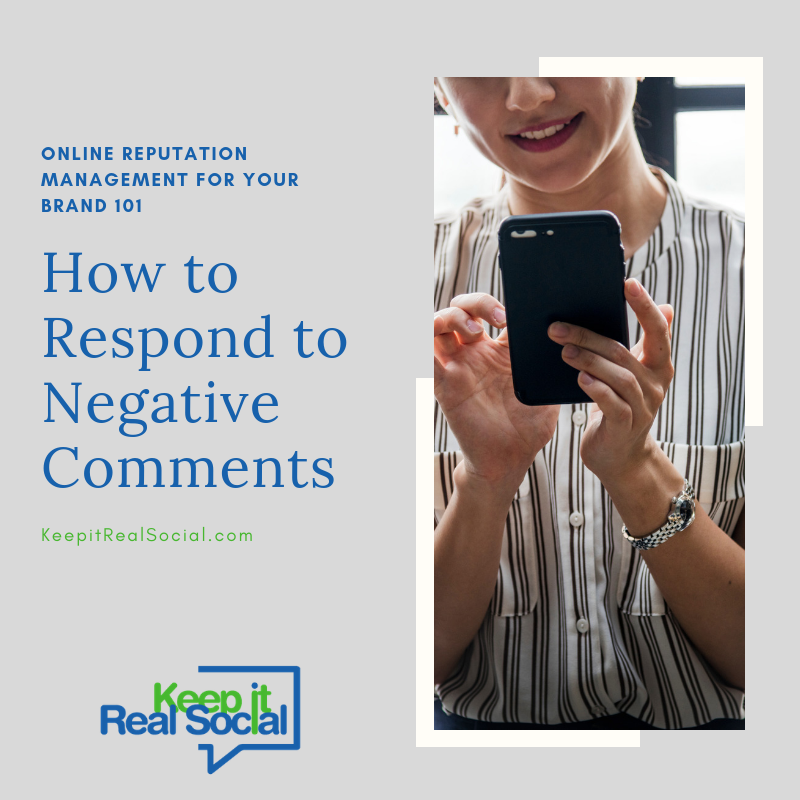As long as a comment is legitimate, it’s best to respond to it rather than delete it. People have probably already seen it and your response can help to show that you care about your customers. Plus, once you have your protocols established, it will be easy to respond.
When you respond, your goal is to understand the problem, empathize, and offer a satisfactory solution. The world is watching and this content could stay up forever, so keep the commenter’s best interests at heart while also writing for others to see. If you’re feeling angry or defensive, take some time to cool down and compose yourself before you respond, or delegate it to a member of your team who is impartial.
Be careful about apologizing. Don’t apologize at first until you understand the whole situation. For example, if someone posted a comment criticizing your product, don’t apologize because this admits to wrongdoing. It means you are acknowledging your fault or the faults of the product. Instead, you could say something like, “I’m sorry you were unsatisfied.” This shows your empathy without admitting to wrongdoing.
If, however, something turns out to be your fault, apologize profusely. If you really did drop the ball, show that you’re genuinely sorry so that others can see it.
When you respond, you may also want to ask for more details. In the example above where someone says they couldn’t get your program to work, ask them how they installed it. Try to see if they made a mistake somewhere, but be careful not to imply that it was their fault.
Once you’ve figured out the nature of the problem and empathized, offer a reasonable solution to make them satisfied. For example, offer to give them a refund. Make sure it’s reasonable and realistic for you to do. When you create your protocols, be sure to state this so that your employees understand what they can and can’t do.
Counteracting Negative Content with Positive Content
You can minimize the damage of negative content by flooding the web with positive content. If you have tons of glowing reviews singing your praises and there’s one review that complains, the bad review won’t do much damage to your reputation.
This positive content is much more powerful if it wasn’t written by you. Give people the chance to sing your praises. Build an active social media following and encourage interaction. Give your audience chances to communicate with you and post content about your brand.
Encourage reviews and testimonials. Reach out to happy customers and ask if they would tell others about you. Identify influencers and reach out to them to write reviews for you. It’s fine to offer a soft incentive in the form of a freebie, a discount, or a return favor. Make it a regular part of your marketing process to encourage people to write you a testimonial. For example, after a purchase, ask if the customer would like to write a review.
There are also SEO solutions to help you bury bad search results. You can start a proactive SEO campaign that targets the keywords that turn up bad results for you. For example, if a bad review comes up when someone searches for “(your business) review,” create positive content based around this keyword. This will push the negative listings further down in the search results.
You can also take back negative keywords. If you found negative content when you searched for “(your business) bad service,” create your own content based around these keywords. You can write a blog post with a title like – “(your business) and Bad Service – What Makes Our Customer Service Unique.”



